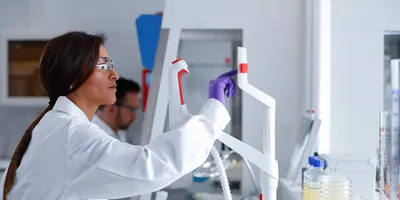Introduction to Method Validation and Verification in Laboratory Settings
In laboratory environments—especially within pharmaceutical development, clinical diagnostics, food safety, and environmental analysis—accurate and reliable testing is critical. To meet these demands, labs rely on thoroughly vetted analytical methods. Two essential processes that ensure the fitness of these methods are method validation and method verification.
While both aim to confirm that a method is suitable for its intended purpose, they serve different roles. Method validation ensures a method is fit during development or transfer, whereas method verification confirms that a previously validated method performs as expected in a specific laboratory setting.
This distinction is crucial in regulated environments where data integrity, reproducibility, and compliance are non-negotiable. Understanding when and how to apply each process can save labs time, reduce costs, and maintain regulatory confidence.
For professionals involved in quality assurance, regulatory affairs, and laboratory management, choosing between method validation and verification is more than a technical decision—it's a strategic one.
What is Method Validation in Laboratory Analysis?
Definition: Method validation is a documented process that proves an analytical method is acceptable for its intended use. It is a comprehensive exercise involving rigorous testing and statistical evaluation, typically required when developing new methods or transferring methods between labs or instruments.
How it Works: During validation, parameters such as accuracy, precision, specificity, detection limit, quantitation limit, linearity, and robustness are systematically assessed. Regulatory guidelines—like those from ICH Q2(R1), USP <1225>, and FDA—serve as frameworks for validation protocols.
Advantages of Method Validation
- Regulatory Compliance: Required by international regulatory bodies, method validation is essential for new drug submissions, diagnostic test approvals, and environmental monitoring protocols.
- High Confidence in Data Quality: By assessing parameters like precision, accuracy, and specificity, validation ensures the data produced is scientifically robust and reproducible.
- Universal Applicability: Once validated, a method can be confidently used across various instruments, analysts, and locations, enhancing consistency and scalability.
- Supports Method Transfer: Thorough validation facilitates seamless technology transfer between R&D and quality control labs or across global laboratory networks.
- Comprehensive Risk Mitigation: Through extensive evaluation, validation uncovers methodological weaknesses early on, reducing the risk of costly errors in regulated workflows.
Challenges of Method Validation
- Time-Consuming: Designing, executing, and documenting a full validation protocol can extend project timelines significantly, especially in complex analytical methods.
- Resource-Intensive: Requires significant investment in training, instrumentation, reference standards, and statistical analysis tools.
- Costly for Routine Labs: For labs performing standardized, well-established tests, full validation may introduce unnecessary financial and operational burden.
- Overkill for Simple Assays: In situations where methods are already standardized and broadly accepted, validation might exceed the scope needed for quality assurance.
What is Method Verification in Laboratory Testing?
Definition: Method verification is the process of confirming that a previously validated method performs as expected under specific laboratory conditions. It is typically employed when adopting standard methods (e.g., compendial or published methods) in a new lab or with different instruments.
How it Works: Labs conduct limited testing—focusing on critical parameters like accuracy, precision, and detection limits—to ensure the method performs within predefined acceptance criteria. It is less exhaustive than validation but still essential for quality assurance.
Advantages of Method Verification
- Time and Cost Efficient: Because it involves a narrower set of performance characteristics, method verification is faster to execute and more economical, particularly valuable in fast-paced or budget-conscious laboratories.
- Ideal for Compendial Methods: When applying established methods from regulatory compendia like USP, EP, or AOAC, verification ensures compliance without the need for full revalidation, saving significant effort while maintaining quality standards.
- Focus on Real-World Conditions: Verifies that the method works effectively under the lab’s actual operational environment, instruments, and sample matrices, ensuring practical reliability.
- Supports Lab Accreditation: Plays a key role in meeting accreditation standards such as ISO/IEC 17025, demonstrating that the lab can reliably perform standardized methods as intended.
Challenges of Method Verification
- Limited Scope: Since verification does not assess every parameter, it might overlook subtle weaknesses in the method that could impact data integrity in the long run.
- Requires a Baseline: Verification is only applicable when the method has already undergone complete validation, limiting its use to existing, pre-approved methodologies.
- May Not Meet All Regulatory Requirements: Certain regulatory contexts or novel applications might still demand full validation, especially when dealing with new analytes or critical patient data.
- Potential Misapplication: Inappropriately substituting verification for validation could result in non-compliance, erroneous results, or failed audits, particularly in highly regulated industries.
Method Validation vs Method Verification: Comparative Analysis
1. Sensitivity
- Validation: Involves rigorous testing to determine LOD (Limit of Detection) and LOQ (Limit of Quantitation), ensuring the method can detect trace levels.
- Verification: Confirms that published LOD/LOQ are achievable under lab-specific conditions.
✅ Verdict: Validation offers better assurance of sensitivity.
2. Quantification Accuracy
- Validation: Full-scale calibration and linearity checks make it ideal for precise quantification.
- Verification: Adequate for confirming quantification but lacks full calibration scope.
✅ Verdict: Validation is superior for quantitative accuracy.
3. Flexibility
- Validation: Highly customizable, adaptable to new matrices, analytes, or workflows.
- Verification: Limited to the conditions defined by the validated method.
✅ Verdict: Validation provides greater flexibility.
4. Implementation Speed
- Validation: Takes weeks or months depending on complexity.
- Verification: Can be completed in days, enabling rapid deployment.
✅ Verdict: Verification is faster and more efficient for existing methods.
5. Regulatory Suitability
- Validation: Required for new drug applications, clinical trials, and novel assay development.
- Verification: Acceptable for standard methods in established workflows.
✅ Verdict: Validation is necessary for regulatory submissions.
Real-World Application Examples of Validation and Verification
Method Validation in Action:
- Pharmaceutical Development: Creating a new HPLC method for active ingredient quantification in a novel formulation requires full validation. Accuracy, specificity, and robustness must be demonstrated to comply with regulatory guidelines.
- Clinical Diagnostics: Developing a new ELISA for a biomarker demands method validation to ensure diagnostic reliability and regulatory approval.
Method Verification in Action:
- Environmental Analysis: A water testing lab adopting a standard EPA method for pesticide residue analysis verifies that the method works with their instruments and matrices.
- Food Safety Testing: A lab verifies AOAC methods to confirm that standard procedures for detecting contaminants like aflatoxins function as expected under local conditions.
Summary Comparison Table: Method Validation vs Verification
Comparison Factor | Method Validation | Method Verification |
Sensitivity | Comprehensive | Confirmatory |
Quantification | High precision | Moderate assurance |
Flexibility | Highly adaptable | Method-limited |
Structural Info | Fully characterized | Based on existing data |
Speed | Slower | Rapid deployment |
Conclusion: Choosing Between Method Validation and Verification
Choosing between method validation and method verification depends on your lab’s goals, regulatory environment, and available resources.
- For new method development or regulatory submission, method validation is essential.
- For routine analysis using standard methods, method verification offers a quicker and more efficient path.
- For regulated industries like pharma or diagnostics, full validation may be non-negotiable.
Ultimately, many labs benefit from a hybrid approach, validating methods when innovation is involved and verifying when implementing established protocols. Strategic planning ensures both scientific rigor and operational efficiency. Looking to optimize your analytical workflows? Explore our latest instruments and software solutions tailored for method validation and verification. And don’t forget to check out our in-depth guide titled Introduction to Pharmaceutical Equipment Validation to ensure your lab is audit-ready and compliant from day one.
Frequently Asked Questions (FAQ) About Method Validation and Verification
What is the main difference between method validation and method verification?
Method validation is a comprehensive process to confirm that an analytical method performs reliably and accurately for its intended purpose, typically required during method development. Method verification, on the other hand, is used to confirm that a validated method performs well under the specific conditions of a given laboratory.
Lab Quality Management Certificate
The Lab Quality Management certificate is more than training—it’s a professional advantage.
Gain critical skills and IACET-approved CEUs that make a measurable difference.
When should a lab choose method validation over verification?
Method validation should be used when developing a new analytical method, transferring a method between labs, or when required by regulatory bodies. Verification is more suitable when adopting standard or compendial methods where the method has already been validated by another authority.
Are both method validation and verification required for ISO/IEC 17025 accreditation?
While full method validation is not always mandatory, method verification is generally required for ISO/IEC 17025 to demonstrate that standardized methods function correctly under local laboratory conditions.
Can method verification replace method validation in pharmaceutical laboratories?
No. In pharmaceutical labs governed by stringent regulatory standards, method validation is essential for novel methods or significant changes. Verification may be appropriate for compendial methods but cannot substitute full validation in development and regulatory submissions.












